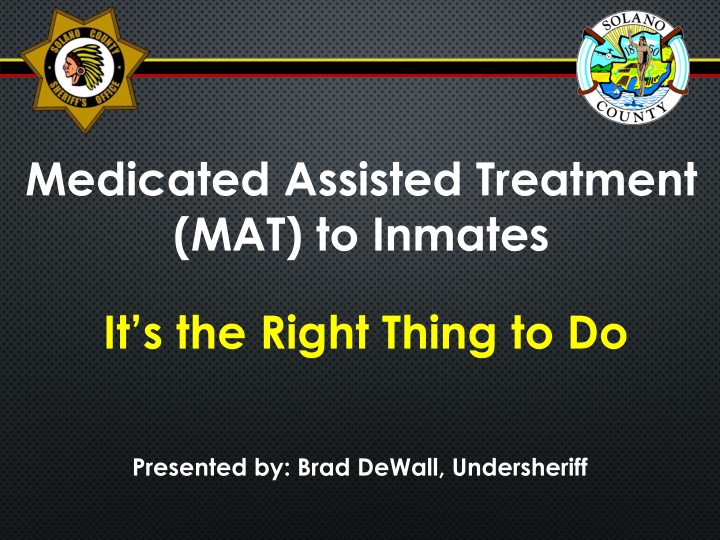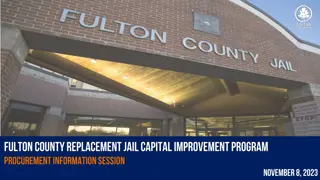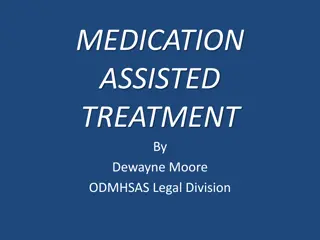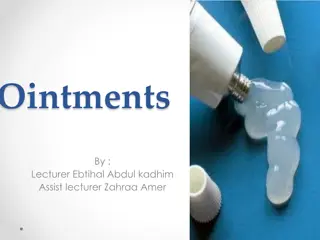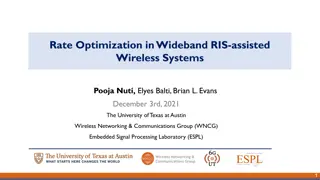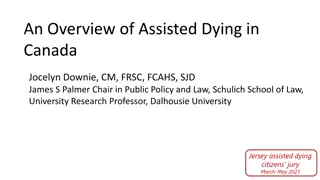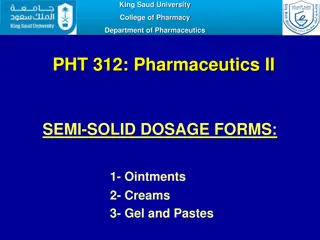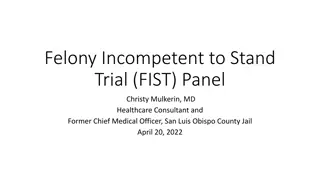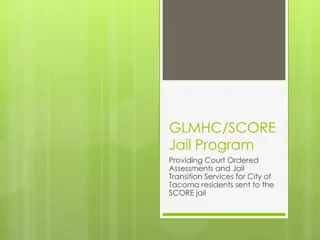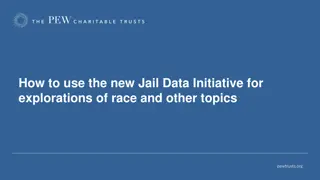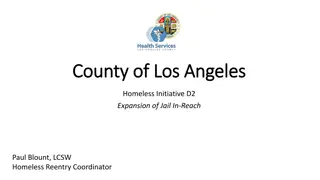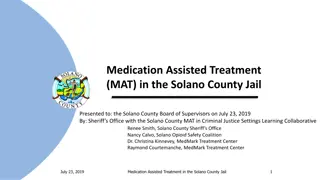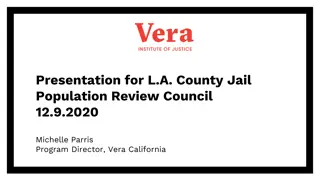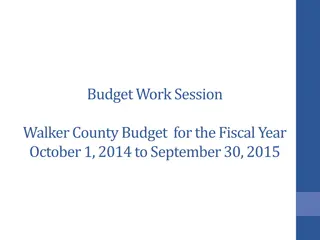Medicated Assisted Treatment (MAT) in Solano County Jail
Implementation of Medicated Assisted Treatment (MAT) in Solano County Jail to address opioid use disorders and improve inmate health outcomes. Learn about evidence-based practices, challenges faced, and the goal of MAT treatment. Discover data on the opioid epidemic and the impact on local jails. Follow the MAT Learning Collaborative's initiatives to integrate MAT programs effectively in correctional facilities
Download Presentation

Please find below an Image/Link to download the presentation.
The content on the website is provided AS IS for your information and personal use only. It may not be sold, licensed, or shared on other websites without obtaining consent from the author.If you encounter any issues during the download, it is possible that the publisher has removed the file from their server.
You are allowed to download the files provided on this website for personal or commercial use, subject to the condition that they are used lawfully. All files are the property of their respective owners.
The content on the website is provided AS IS for your information and personal use only. It may not be sold, licensed, or shared on other websites without obtaining consent from the author.
E N D
Presentation Transcript
Medicated Assisted Treatment (MAT) to Inmates It s the Right Thing to Do Presented by: Brad DeWall, Undersheriff
What is Medicated Assisted Treatment (MAT) Evidence-Based Practice in the treatment of Opioid Use Disorders (OUDs) and Alcohol Use Disorders (AUDs) Viewed as a Whole Person approach, it includes: Medication Counseling Medical Treatment Services (Diagnostics) Recovery Services
The Goal of Medicated Assisted Treatment (MAT) The Goal of MAT Treatment is to heal the brain through: Utilizing medicine to replace the illicit opioids in the brain that cause disease driven decision-making that may lead to criminal behavior, including low impulse control, by: Developing new habits of thinking and behavior Addressing medical and mental health challenges Developing a positive support system
Data on the Opioid Epidemic Nationally, during the years 2016 and 2017: 130+ people died every day in opioid related deaths In 2017, Solano County: There were 312,952 prescriptions were written, or about 1 prescription for every adult resident 3,980 individuals had an opioid use disorder 1,155 to 2,358 people with opioid use disorders did not have access to opioid treatment
Challenges Facing Local Jails Today Nationally, an estimated two-thirds of people in jail meet the criteria for drug dependence or abuse 25% of which have an Opioid Use Disorder (OUD) The Solano County Jail: Opioid Use Disorder In FY 2017/2018, 571 individuals were withdrawn from opiates. During this same time period, 60 individuals entered the jail on some form of MAT but were withdrawn
MAT Learning Collaborative in Jail Received $25,000 grant in 2018 to form a team to learn about MAT and develop an implementation plan Attended in-person learning collaboratives, consulted with advisory groups, and participated in coaching calls, webinars and podcasts Learned best practices and results from other jails with MAT programs Identified local treatment center as partner to provide the medication at no cost
Treat Addiction with MAT in Jail Continue MAT for inmates in custody Inmates continuing MAT during incarceration are 3 X less likely to have disciplinary issues than those on forced MAT withdrawal Treating pregnant women with OUD in jails can profoundly impact the health of the fetus and the recovery of the mother Release from jail without sustained treatment creates high risk of overdose death risk increases 40 X Evidence/research shows MAT to inmates works to stabilize and reduce risk of overdose
MAT in Jail Annually maintain up to 60 individuals on their medication if at time of booking they are already on a MAT treatment plan Sheriff s Office is hiring a Mental Health Clinician with grant funding to coordinate program Coordinate tracking, assessment, placement in in-custody MAT program Monitor progress; serve as liaison with partners Coordinate planning community transition Coordinate Naloxone Distribution project
MAT in Jail- Upon Release Implement a Naloxone distribution program for inmates upon release from jail and assigned to providers outside the jail Develop Naloxone administration training module for inmates Provide Naloxone training to 750 inmates during the year Develop Naloxone administration instruction card and substance abuse resource card to attach to Naloxone dose and be given to inmates upon release
Future Program The Give Life a Chance (GLC) program seeks Remove the stigma associated with the traditional narcotic enforcement approach. Provide aid and positive resolve to remedy the opioid epidemic. Unification between community and law enforcement services. Narcan distribution to low income, homeless (civilian and veteran) individuals and inmates who are released from custody as part of the Medication-Assisted Treatment (MAT) program. GIVE LIFE A CHANCE GIVE A CHANCE TO FORGIVE GIVE A CHANCE FOR CHANGE
